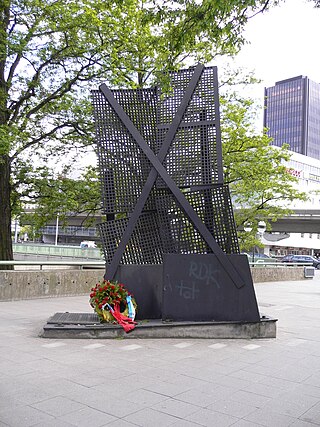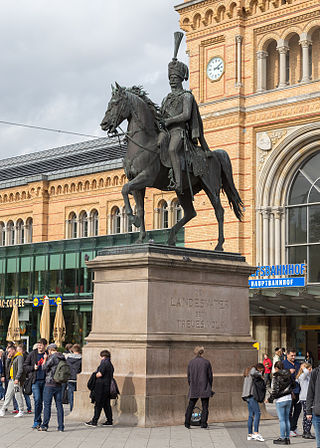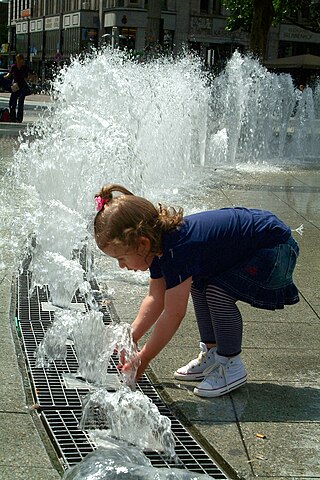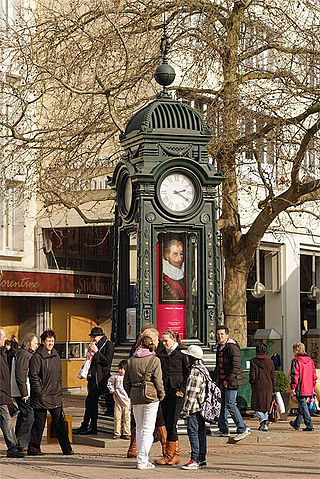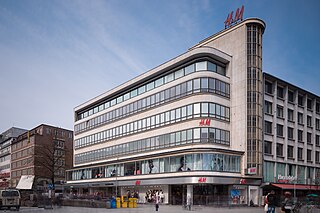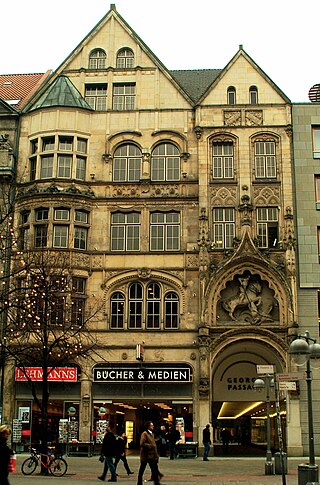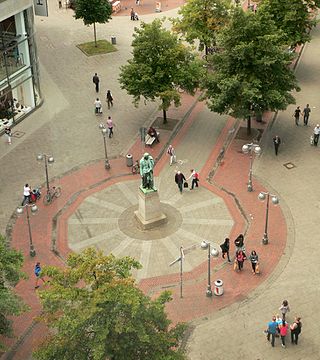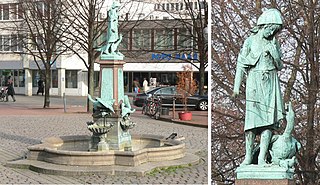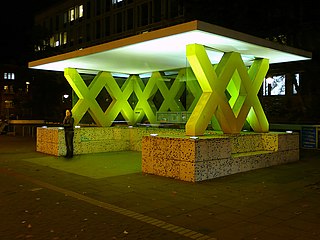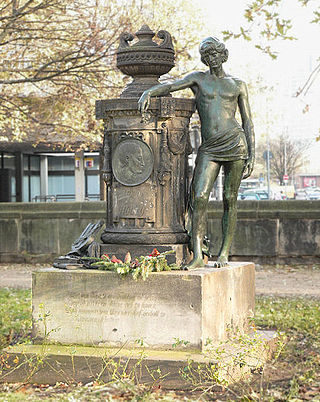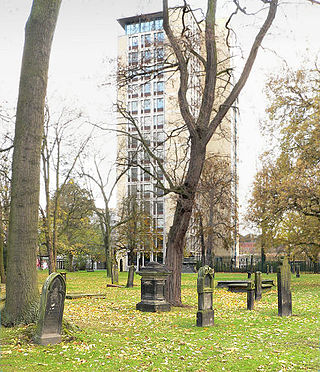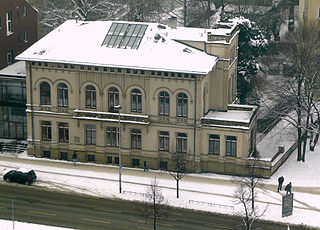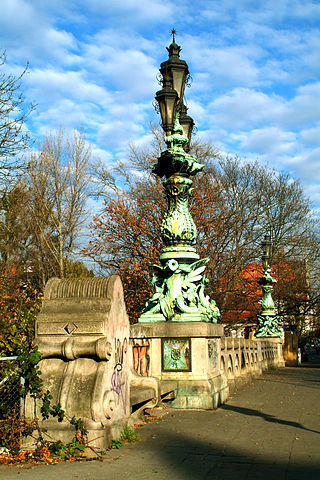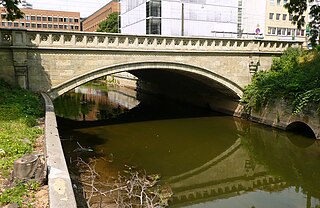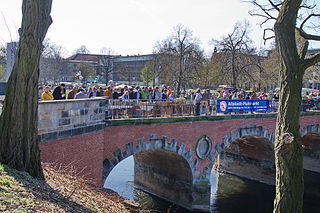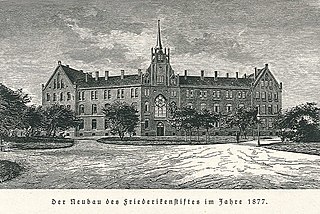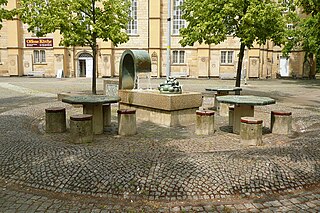Self-guided Sightseeing Tour #4 in Hanover, Germany
Legend
Tour Facts
5.3 km
59 m
Experience Hanover in Germany in a whole new way with our free self-guided sightseeing tour. This site not only offers you practical information and insider tips, but also a rich variety of activities and sights you shouldn't miss. Whether you love art and culture, want to explore historical sites or simply want to experience the vibrant atmosphere of a lively city - you'll find everything you need for your personal adventure here.
Activities in HanoverIndividual Sights in HanoverSight 1: Mahnmal Gerichtsgefängnis Hannover
The Hanover Court Prison Memorial is a memorial in Hanover, which is located behind the main train station and the Raschplatz on the Lister Meile in front of the entrance to the pavilion. It is reminiscent of the court prison that used to be located here, which was built in 1865–75 as the Royal Cell Prison Hanover. The most diverse victims and groups of victims of the National Socialists suffered in it. It is also the first municipal memorial in the Federal Republic of Germany that explicitly commemorates the persecution of homosexual men during the Nazi era.
Sight 2: Ernst-August-Denkmal
Get Ticket*The Ernst August Monument is an equestrian statue in honour of the sovereign of the former Kingdom of Hanover, King Ernst August. It was created in 1861 by Albert Wolff and erected on Ernst-August-Platz in front of Hanover's main railway station. The monument is one of the most important meeting places in Hanover, along with the Kröpcke clock, which is commonly referred to as "Unterm Schwanz".
Sight 3: HAZ-Brunnen
The HAZ fountain in Hanover is a fountain in two parts donated by the Hannoversche Allgemeine Zeitung on Ernst-August-Platz in front of the city's main train station.
Sight 4: Kröpcke Clock
The Kröpcke Clock in Hanover is one of the traditional meeting places in the city. As one of the landmarks of the capital of Lower Saxony, the clock now also serves as a showcase for changing art exhibitions and presentations. The Kröpcke is located as a "square-like extension" in the pedestrian zone in front of Café Kröpcke at the intersection of Georgstraße with Bahnhofstraße and Karmarschstraße as well as Rathenaustraße in the Mitte district.
Sight 5: Kaufhaus Magis
The Magis department store in Hanover is a listed fashion and textile department store from the 1950s. The department store is located on Kröpcke. Its address is Georgstraße 31/33, corner of Bahnhofstraße.
Sight 6: Drachentöterhaus
The Dragon Slayer House in Hanover is a commercial building built between 1900 and 1901 at Georgstraße 10 at the level of the Schiller Monument. The heritage-listed, richly decorated sandstone façade of the house is best known for the figure of Saint George as a dragon slayer, carved almost three-dimensionally by Werner Hantelmann above the Georgspassage.
Sight 7: Friedrich Schiller
The Schiller Monument in Hanover stands in the pedestrian zone of Georgstraße at the junction of Schillerstraße in the Mitte district. The statue honors the poet Friedrich Schiller and is a listed building. Its history goes back to the Kingdom of Hanover.
Sight 8: Gänseliesel-Brunnen
The Gänseliesel Fountain in Hanover was created in 1897 or 1898 by Carl Dopmeyer and was located on the northeastern edge of Steintorplatz until August 2024.
Sight 9: BUSSTOPS
BUSSTOPS in Hanover is an art project with originally twelve half-open bus shelters for trams and city buses of the üstra. It was part of a project on art in public space between 1990 and 1994 and was created on the initiative of the Lower Saxony Foundation in cooperation with üstra and Toto-Lotto Niedersachsen. The design project was carried out by internationally renowned architects and designers. The task for the artists was to create art as an extraordinary part of an ordinary service.
Sight 10: Anzeiger-Hochhaus
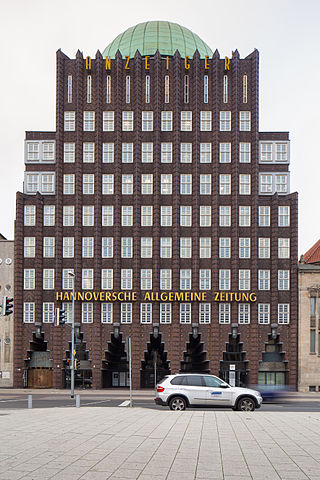
The Anzeiger high-rise in Hanover was built in 1927–1928 in the style of brick expressionism according to a design by Fritz Höger as the publishing house of the Hannoversche Anzeiger and was one of the first high-rise buildings in the German Reich. The 51-metre-high building with ten storeys is located in the Mitte district near Steintor-Platz and, with its characteristic roof dome, has a high recognition value in the capital of Lower Saxony.
Sight 11: Goseriedebad
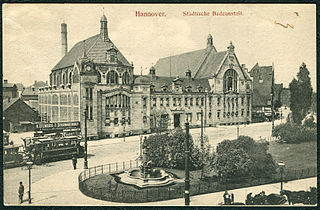
The Goseriedebad was an indoor swimming pool in Hanover, Germany, which opened in 1905 and closed in 1982 and is named after its location on the street Goseriede near Steintorplatz. After renovations in the 1980s and 1990s, the former indoor swimming pool is now used by the Kunstverein Kestnergesellschaft and the private radio station radio ffn.
Sight 12: Saint Nicholas' Chapel
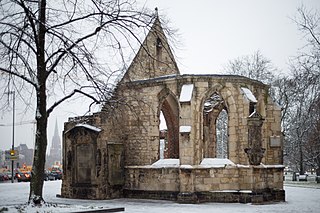
St. Nicholas' Chapel is an architectural heritage monument and the oldest building in Hanover, Germany. First built as a chapel dedicated to Saint Nicholas between 1250 and 1284 and a choir dating to 1325, it was damaged severely during the aerial bombings of Hanover during World War II. In 1953 the then approximately 700-year-old chapel was largely torn down to make way for a road as part of a larger post-war city-wide strategy to accommodate cars, with the currently 699-year-old choir left standing as a monument.
Sight 13: Hölty-Denkmal
The Hölty monument in Hanover was created at the beginning of the 20th century by the architect Otto Lüer and the sculptor Karl Gundelach. The monument was erected in place of a grave of the "spring poet" in the Old St. Nikolai Cemetery, which was no longer to be found at the time of the Electorate of Hanover, and has been changed several times over the course of time.
Sight 14: Neustädter Friedhof
The Neustadt Cemetery in Hanover, operated from 1646 to 1876, is a listed public park on Königsworther Platz with some important grave monuments.
Sight 15: Villa Simon
The Villa Simon is a building located in Hanover on Königsworther Platz in the district of Calenberger Neustadt. It was built in 1858–1860 as the residence of Eduard Simon, a lawyer of Jewish origin. Jewish families were forcibly admitted to the neo-Renaissance style villa during the Second World War. The building survived the air raids on Hanover during the war undamaged. Today, institutions of the Gottfried Wilhelm Leibniz University of Hanover are housed here.
Sight 16: Königsworther Brücke
The Königsworther Bridge in Hanover is considered one of the most beautiful bridges in the city. Its four magnificent candelabras were created by the sculptor Carl Dopmeyer. The listed segmental arch bridge crosses the Leine in Calenberger Neustadt in the course of Königsworther Straße.
Sight 17: Goethe Bridge
The Goethe Bridge in Hanover leads over the Leine in the course of Goethestraße.
Sight 18: Martin Neuffer Bridge
The Martin-Neuffer-Brücke, until 2010 Marstallbrücke, in Hanover leads from the high bank of the old town to the opposite bank of the Leibnizufer. The current bridge, which is a listed building, was built in 1736/37 according to a design by Johann Paul Heumann and was named in December 2010 after the former Hanoverian mayor Martin Neuffer.
Sight 19: Basilica St. Clemens
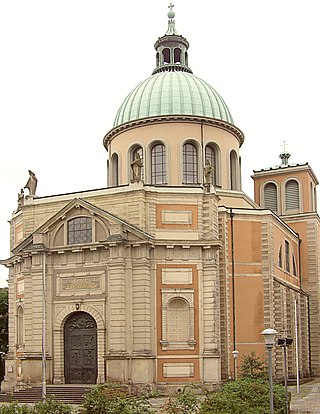
St. Clement's Basilica is the main Roman Catholic church in the city of Hanover. It is dedicated to Saint Clement of Rome. It is part of the parish of St. Heinrich and belongs to the Diocese of Hildesheim.
Wikipedia: St. Clement's Basilica, Hanover (EN), Website, Website, Heritage Website
Sight 20: Kapelle Friederikenstift
The church of the Friederikenstift is an Evangelical Lutheran church in the Hanover district of Calenberger Neustadt. It is located in the old north wing of the Friederikenstift hospital at Humboldtstraße 5.
Sight 21: Neustädter Hof- und Stadtkirche
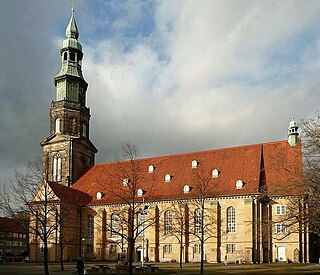
The Evangelical Lutheran Neustadt Court and City Church of St. Johannis in the Hanover district of Calenberger Neustadt is the oldest example in Lower Saxony of the Protestant spatial ideal of a hall church. The church is the preaching church of the state superintendent for the district of Hanover. It is located on the Neustädter Markt, on the so-called Street of Tolerance.
Wikipedia: Neustädter Kirche (Hannover) (DE), Website, Heritage Website
Sight 22: Fürstenhof
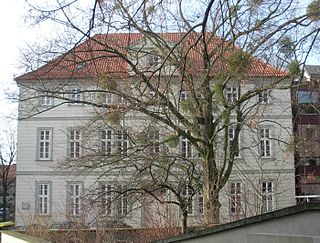
The Fürstenhof is a historic building in the Hanover district of Calenberger Neustadt. Today it houses offices of the Hanover Regional Church Office of the Evangelical Lutheran Church of Hanover.
Sight 23: Neustädter-Markt-Brunnen
The Neustädter Markt fountain in Hanover was created in 1973/74 by Max Sauk. The facility, also known as the "Table Fountain", in the centre of the Neustadt market was privately initiated and donated. It is located in front of the entrance to the Neustadt church.
Share
How likely are you to recommend us?
Disclaimer Please be aware of your surroundings and do not enter private property. We are not liable for any damages that occur during the tours.
GPX-Download For navigation apps and GPS devices you can download the tour as a GPX file.
